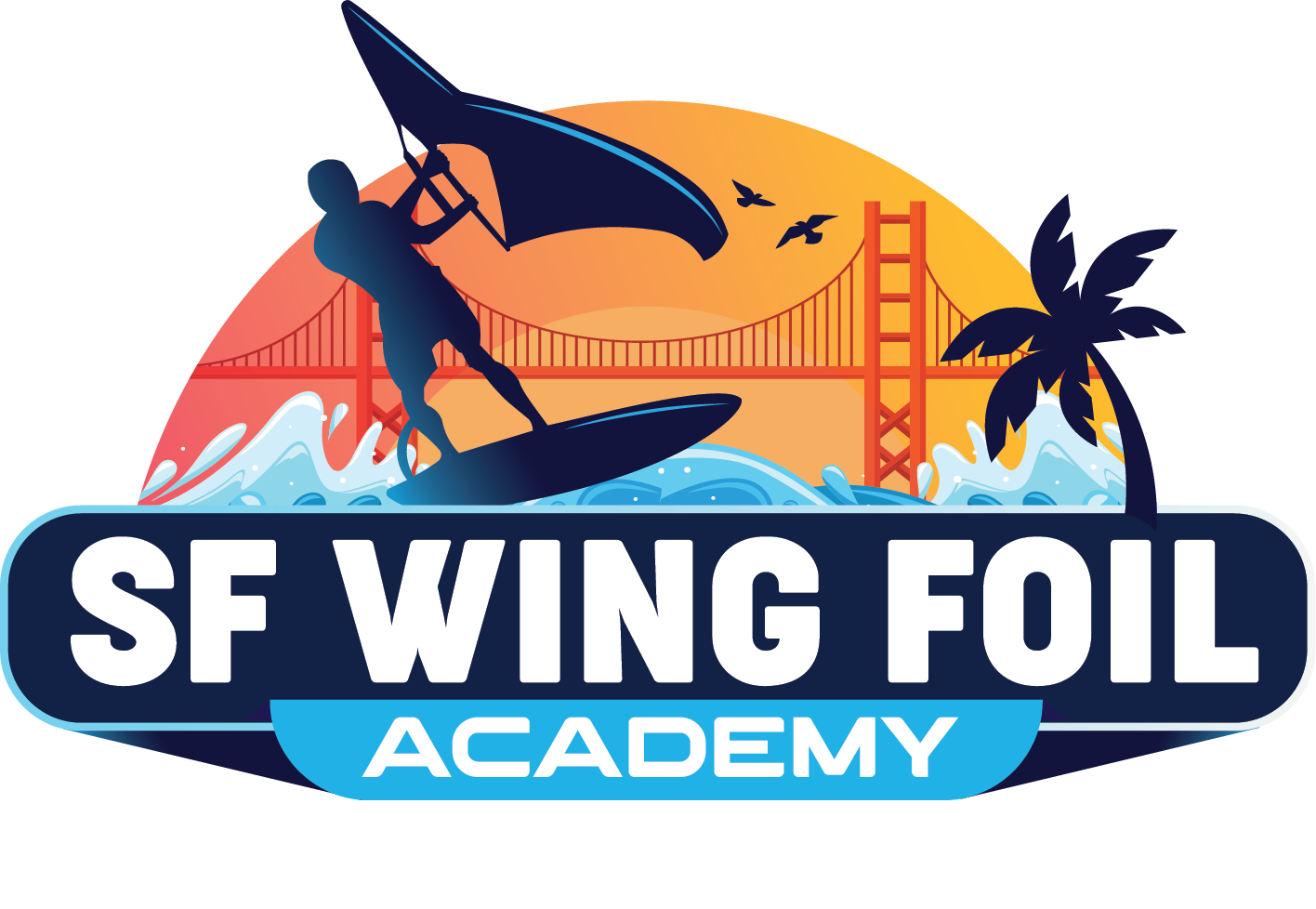When legendary big wave surfer Laird Hamilton declared that “foiling is surfing, therefore if you’re not progressing into foiling, you are stagnant,” he wasn’t just making a bold statement—he was predicting the future of water sports. This revolutionary perspective has transformed how we think about surf progression and opened up incredible opportunities for riders in places like San Francisco Bay Area, where innovative foil surfing schools are making this technology accessible to everyone.
The Laird Hamilton Philosophy: Evolution or Stagnation
Laird Hamilton’s famous proclamation about foiling represents more than just an opinion—it reflects a fundamental understanding of how water sports naturally evolve. As one of the most progressive watermen in history, Hamilton recognized that hydrofoil technology wasn’t just another trend, but a quantum leap forward in how humans interact with water.
The statement “foiling is surfing” challenges traditional thinking about what constitutes “real” surfing. Hamilton’s perspective suggests that foiling doesn’t replace surfing—it represents surfing’s natural evolution, much like how modern surfboards evolved from ancient Hawaiian alaia boards. For riders looking to learn to foil behind a boat or advance their foiling progression, this mindset shift is crucial.
This philosophy has profound implications for surf foil equipment development and how foil surfing schools approach instruction. Rather than treating foiling as a separate sport, progressive instructors recognize that foiling skills enhance all aspects of water sports performance.
The Efficiency Revolution: Why Foiling Changes Everything
The efficiency gains of foiling compared to traditional surfing are nothing short of revolutionary. When a hydrofoil lifts a rider above the water’s surface, the physics of water sports fundamentally change, creating opportunities that were previously impossible.
Drag Reduction and Speed
Traditional surfing involves constant friction between the surfboard and water surface. This drag limits speed, requires continuous wave energy for momentum, and restricts riding to breaking waves. Hydrofoil boards eliminate this surface friction by lifting the rider entirely above the water, creating an almost frictionless gliding experience.
The efficiency difference is dramatic—while traditional surfers lose momentum in flat sections and need breaking waves for propulsion, foil riders can maintain speed across flat water, connect wave sections that would be impossible on traditional boards, and generate speed from minimal wave energy. This efficiency makes locations like San Francisco Bay Area ideal for foiling, where consistent winds and varied water conditions provide perfect learning environments.
Wave Resource Multiplication
Perhaps the most significant efficiency gain of foiling is how it multiplies available wave resources. Traditional surfing requires specific wave conditions—proper size, shape, and breaking characteristics. Foiling opens up riding opportunities in conditions previously considered unsuitable for surfing.
Small waves, wind chop, boat wakes, and even wind-generated swells become rideable with foil equipment. This expansion of rideable conditions is particularly valuable in areas where traditional surf spots may be crowded or inconsistent. A beginner wing school that incorporates foiling can operate in conditions where traditional surf instruction would be impossible.
Energy Conservation and Extended Sessions
The efficiency of foiling extends to physical energy conservation. Traditional surfing requires intense paddling to catch waves and navigate lineups. Foiling, especially when combined with wing surfing or other wind sports, allows riders to harness wind energy for propulsion, dramatically reducing the physical demands of getting into waves.
This efficiency means longer sessions with less fatigue, faster progression for beginners, and the ability to focus on technique rather than exhausting paddle battles. For students at a foil surfing school, this translates to more productive learning time and faster skill development.
The San Francisco Bay Area: Perfect Foiling Laboratory
The San Francisco Bay Area represents an ideal environment for understanding Hamilton’s foiling philosophy in practice. The region’s consistent winds, varied water conditions, and innovative water sports community create perfect conditions for foiling progression.
Bay Area conditions that favor foiling include reliable thermal winds perfect for wing foiling, diverse water environments from protected bays to open ocean, consistent boat traffic creating learnable wake opportunities, and a progressive water sports community embracing new technologies.
For beginners looking to learn to foil behind a boat, the Bay Area’s protected waters and professional instruction options provide safe, controlled environments for initial skill development. The region’s foil surfing schools have developed systematic progressions that make this advanced technology accessible to riders of all levels.
Equipment Evolution: From Traditional Boards to Hydrofoil Boards
Hamilton’s vision of foiling as surfing’s natural evolution is clearly reflected in modern surf foil equipment development. Today’s hydrofoil boards represent sophisticated engineering that makes foiling accessible while maintaining high performance potential.
Modern Foil Design
Contemporary foil systems feature modular designs allowing progression from stable beginner setups to high-performance race configurations, materials engineering that balances strength, weight, and cost, and safety features that protect riders and equipment during the learning process.
The evolution from early experimental foils to today’s refined systems demonstrates how quickly the technology has matured. Modern surf foil equipment offers unprecedented accessibility while maintaining the performance characteristics needed for advanced progression.
Integration with Traditional Skills
Rather than replacing traditional surfing skills, quality hydrofoil boards enhance and build upon existing water sports abilities. Balance, wave reading, and timing skills transfer directly from traditional surfing to foiling, while foiling skills improve traditional surfing by enhancing spatial awareness and wave energy understanding.
This integration supports Hamilton’s philosophy that foiling represents evolution rather than replacement. A comprehensive beginner wing school incorporates traditional water sports skills while introducing foiling technology systematically.
Learning Progression: From Stagnation to Flow
Hamilton’s warning about stagnation resonates particularly strongly in the context of learning progression. Traditional surfing, while beautiful and challenging, can reach plateaus where advancement becomes increasingly difficult. Foiling opens up entirely new dimensions of progression and challenge.
Breaking Through Plateaus
Experienced surfers often find that foiling reinvigorates their relationship with water sports. The three-dimensional nature of foil flight, the requirement for precise balance and control, and the expanded range of rideable conditions create fresh challenges that reignite progression.
For beginners, starting with foiling can accelerate overall water sports development. Learning to foil behind a boat provides controlled introduction to hydrofoil dynamics, while wing foiling develops wind awareness and sail handling skills that enhance all wind sports.
Systematic Skill Development
Modern foiling progression follows systematic approaches developed by leading foil surfing schools. These progressions typically include controlled boat-assisted learning for initial foil experience, wing foiling instruction for wind sports integration, and surf foiling development for wave-specific skills.
The beauty of systematic foiling progression is how skills transfer between disciplines. Wing foiling skills enhance surf foiling control, while boat foiling experience provides the foundation for both. This interconnected skill development reflects Hamilton’s vision of foiling as a comprehensive water sports evolution.
The Business of Foiling: Meeting Demand for Progression
The growing recognition of Hamilton’s foiling philosophy has created unprecedented demand for quality foiling instruction and equipment. Forward-thinking businesses that embrace this evolution are positioned to serve riders seeking to escape stagnation and explore foiling’s potential.
Professional Instruction Value
Quality foiling instruction provides value that extends far beyond basic skill development. Professional foil surfing schools offer safety expertise that prevents injury and equipment damage, systematic progressions that accelerate learning and build confidence, equipment knowledge that helps students make informed purchasing decisions, and ongoing support that facilitates continued progression.
The complexity of foiling technology and the importance of proper technique make professional instruction essential for most riders. A beginner wing school that offers comprehensive foiling education provides students with the foundation needed for lifelong progression.
Equipment Guidance and Selection
The rapid evolution of surf foil equipment makes expert guidance invaluable for riders at all levels. Professional instructors help students understand how different hydrofoil boards affect learning progression, which wing sizes and designs match specific skill levels and goals, and how to modify equipment setups for changing conditions and abilities.
This guidance prevents costly equipment mistakes and ensures that students progress efficiently through their foiling journey. The investment in quality instruction often pays for itself through improved equipment selection and faster skill development.
Environmental Considerations: Sustainable Progression
Hamilton’s philosophy also embraces environmental stewardship, recognizing that foiling’s efficiency offers more sustainable approaches to water sports. The ability to ride longer distances with less physical energy, utilize conditions previously unsuitable for surfing, and reduce dependence on specific wave resources aligns with sustainable recreation principles.
Foiling’s efficiency means less impact per ride while providing greater satisfaction and progression opportunities. This sustainability aspect resonates particularly strongly in environmentally conscious areas like the San Francisco Bay Area, where riders appreciate technologies that enhance rather than exploit natural resources.
The Future: Beyond Traditional Limitations
Looking ahead, Hamilton’s vision of foiling as surfing’s evolution continues to prove prescient. Emerging technologies in hydrofoil boards, wings, and related equipment promise even greater efficiency and accessibility. The integration of foiling with other water sports creates hybrid disciplines that push progression beyond traditional limitations.
For riders and businesses embracing this evolution, the opportunities are limitless. Areas like the San Francisco Bay Area, with their progressive water sports communities and ideal conditions, are positioned to lead this evolution. Whether through comprehensive beginner wing schools, advanced foiling progression programs, or innovative equipment development, the future belongs to those who embrace rather than resist this technological revolution.
Taking Action: Embracing the Evolution
Hamilton’s challenge—progress into foiling or remain stagnant—isn’t just philosophical. It’s a practical call to action for anyone serious about water sports progression. The efficiency gains, expanded riding opportunities, and renewed challenge that foiling provides make it an essential component of modern water sports education.
For Bay Area riders ready to escape stagnation and explore foiling’s potential, professional instruction provides the safest and most efficient path forward. Learning to foil behind a boat offers controlled introduction to this revolutionary technology, while comprehensive wing foiling programs develop the skills needed for independent progression.
The choice is clear: embrace the efficiency and progression opportunities that foiling provides, or accept the limitations of traditional approaches. As Laird Hamilton recognized, foiling isn’t just another water sport—it’s the evolution of surfing itself.
Conclusion: The Stagnation Solution
Laird Hamilton’s declaration that “foiling is surfing” and his warning about stagnation have proven remarkably prophetic. The efficiency gains of hydrofoil technology, the expanded riding opportunities it provides, and the renewed progression challenges it creates make foiling an essential component of modern water sports.
For riders in the San Francisco Bay Area and beyond, quality foiling instruction provides the pathway to this evolution. Whether starting with boat-assisted learning, developing wing foiling skills, or progressing to advanced surf foiling, the journey from stagnation to progression begins with embracing the technology and instruction that make this revolution accessible.
The efficiency speaks for itself—longer rides, expanded conditions, reduced physical demands, and unlimited progression potential. Hamilton’s vision wasn’t just about technology; it was about refusing to accept limitations and continuously pushing the boundaries of what’s possible on the water.
Don’t remain stagnant. The evolution is here, the technology is proven, and the instruction is available. The only question is whether you’re ready to embrace the future of water sports progression.


